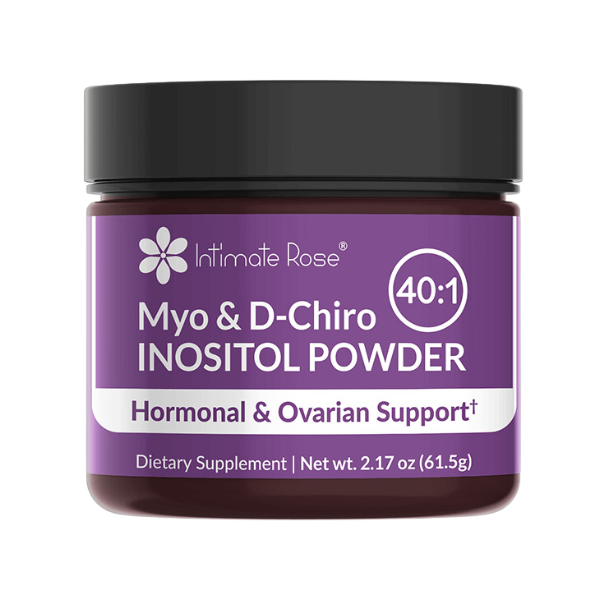Types of Cervical Fluid | White Discharge After Ovulation | Other Causes
Vaginal discharge, also known as cervical fluid or cervical mucus, can change color, texture, and thickness throughout the menstrual cycle. Influenced by the female hormones and indicative of what is going on in the reproductive system, vaginal discharge can change from dense & dry to slippery & stretchy when it’s time for ovulation.
For this reason, many women track their vaginal discharge when trying to conceive. A lot of women also wonder if a white discharge after ovulation means they are pregnant.
Read on to understand why your vaginal discharge alters during the menstrual cycle and what a white discharge after ovulation usually means.
What is Vaginal Discharge/Cervical Fluid?
Cervical fluid is a liquid/gel-like substance produced by the glands in the cervix when stimulated by varying hormone levels during different stages of the menstrual cycle. Because it is linked to the menstrual cycle, vaginal discharge/cervical fluid can let women know when they are fertile, ovulating, or about to menstruate.
What Does Cervical Fluid Do?
The role of cervical fluid varies, depending on which stage a woman is at in the menstrual cycle. For ovulation, for instance, the cervical fluid becomes slippery and stretchy, resembling the texture of a raw egg white. This change in viscosity helps sperm to swim more easily toward the egg for fertilization. The second role of cervical fluid is to prevent bacteria and sperm from entering the uterus after ovulation.
Cervical fluid also helps keep the vagina clean and maintain healthy pH levels with a natural balance of good and harmful bacteria to keep infections at bay. When harmful bacteria are overproduced in the vagina for any reason, women will typically notice unusual changes to their vaginal discharge, such as an altered odor, color, or texture.

Things Off Down There?

Things Off Down There?
Types of Cervical Fluid During the Menstrual Cycle
During the reproductive years, the amount, thickness, and color of cervical fluid changes naturally through the course of the monthly menstrual cycle. Although this fluid will not look exactly the same for every woman, the following descriptions are common among most.
- During menstruation – The production of cervical fluid is low and because it is mixed with the flow of menstrual blood it goes unnoticed.
- Day 1-3 after menstruation – Cervical fluid production remains low for a few days after menstruation as estrogen begins to increase. During this time, cervical fluid is still present but it is often dry or dense enough to appear absent.
- Between menstruation & ovulation – In the days between menstruation and ovulation estrogen levels rise and cervical fluid becomes thicker and sticky, and it is mainly white or pale yellow.
- Around day 9 or 10 - As estrogen levels continue to rise, cervical fluid often changes from clear to white or pale yellow and has a more wet and creamy consistency.
- Days before ovulation – As ovulation approaches, estrogen levels peak and the amount of cervical fluid typically increases. The texture also changes to become slippery and stretchy, similar to raw egg whites. This slippery fluid assists sperm in its journey to the fallopian tubes for fertilization.
- End of Ovulation – Once the ovulation phase passes without fertilization, the amount of cervical fluid decreases and once again becomes sticky and dry as progesterone increases and signals menstruation. Then the entire cycle starts again.
White Discharge After Ovulation – Am I Pregnant?
After ovulation, during the luteal phase of the menstrual cycle, cervical fluid typically decreases and becomes sticky and dry. If you notice some white vaginal discharge after ovulation, it could mean a few different things.
White vaginal discharge after ovulation could be a sign of pregnancy due to the accumulation of cervical mucus, which effectively plugs the cervical opening to protect the baby.
Progesterone levels also increase after fertilization, which leads to more vaginal lubrication that can result in white vaginal discharge. This type of discharge is usually clear or white and creamy with little to no odor.
If white vaginal discharge after ovulation is lumpy, accompanied by vulvar itching, swelling, or a stinging sensation when urinating, then an underlying infection is more than likely at the root of your discharge.
What Does Egg White Discharge Mean?
Egg white discharge is described as such because its appearance and texture resemble raw egg whites - clear, stretchy, and sometimes watery. Also referred to as Egg White Cervical Mucus (EWCM), the most common appearance of this vaginal discharge occurs just before ovulation when females are most fertile.
As estrogen levels increase before ovulation, the cervix produces this egg-white discharge to help sperm reach the released eggs more easily. After ovulation, when estrogen levels drop and progesterone levels rise, the vaginal discharge typically changes back to a white or light-yellow color that has a thicker and drier consistency.
Besides the indication of fertility, an egg white discharge is also common when women are sexually aroused. In the early stages of pregnancy, women may notice a vaginal discharge similar to egg white too. This is due to the higher levels of hormones required to sustain a healthy pregnancy.
Other Causes of White Discharge After Ovulation
After ovulation, the slippery and stretchy cervical fluid typically dries up, and even though discharge following ovulation is normal, it is not often noticeable. That said, the texture and amount of cervical fluid can vary from woman to woman so some might notice more vaginal discharge than others after ovulation.
If you notice accompanying symptoms to your vaginal discharge, however, your vaginal pH balance might be off and an underlying infection could have taken hold.
What Alters The Vaginal pH Balance?
A healthy vagina typically measures between 3.8 and 4.2 on the pH scale, meaning a perfect balance of good and harmful bacteria is maintained to ward off infection. However, several internal factors and external influences can alter the pH balance of the vagina.
Fluctuating hormones, menstruation, menopause, vaginal dryness, humidity, excessive sweating, or fecal bacteria (from wiping back to front) are some of the internal factors that can alter vaginal pH levels.
Externally; douching products, scented soaps, fragranced detergents, lubricants, spermicides, and too-tight clothing are often culprits. In addition, shaving the vulva, leaving sanitary pads for too long, and unprotected sex can also alter a healthy vaginal pH balance.
When the vaginal balance pH is off, women are far more susceptible to infections like yeast infections, urinary tract infections (UTIs), bacterial vaginosis (BV), and sexual infections like chlamydia, gonorrhea, and trichomoniasis.
Two infections that are known to cause white vaginal discharge are bacterial vaginosis and yeast infections.
What Is Bacterial Vaginosis & How Is It Treated?
Caused by an imbalance of good and harmful bacteria in the vagina, bacterial vaginosis (BV) is an infection known to occur in sexually active women. Although the vaginal discharge linked to bacterial vaginosis is normally gray, yellow, or green, it can also be white and is typically thin.
Additional indicators of BV are a fish-like odor from discharge, especially after intercourse, itching around the genitals, and a burning sensation while peeing.
Although typically treated with a course of antibiotics, BV infections are known to reoccur in over 50% of women due to bacteria lingering after the infection has cleared. Thankfully, when taken in conjunction with antibiotic treatment, a natural remedy called Boric Acid has been proven to rebalance the vaginal microflora after BV and restore a healthy pH balance.
Thereby not only relieving current symptoms quicker but also preventing recurring infections. Here at Intimate Rose, we’ve produced easy-to-use Boric Acid Vaginal Suppositories that dissolve within minutes and act quickly to alleviate symptoms.
If you suffer from recurring BV infections, we highly recommend taking our Flora Bloom Probiotics too. Loaded with cranberry and D-Mannose, when taken daily, they will not only rebalance the vaginal microbiome but also maintain healthy vaginal pH levels to keep future infections at bay. It is also advisable to refrain from douching, wash the genitals after intercourse, and use condoms to avoid recurring BV infections.
The Ultimate Vaginal Bundle

What Is a Yeast Infection & How is It Treated?
If white vaginal discharge occurs after ovulation and its texture is lumpy like cottage cheese, it is more than likely a sign of a yeast infection. Especially if the vaginal discharge smells foul and is accompanied by genital itching, swelling of the vulva, or a burning sensation while urinating.
Although naturally available in foods like yogurt, kombucha, and miso soup, taking regular probiotic supplements has become widely recommended by OB/GYNs to treat yeast infections.
Just as they balance the gut microbiome, probiotics also help to balance the vaginal microbiome and prevent the overgrowth of harmful bacteria. Women who are prone to yeast infections, for example, have reported that taking a daily Flora Bloom Probiotic eliminated recurring infections.
If you suffer from regular yeast infections, you might also want to consider taking a course of Boric Acid Suppositories along with a daily probiotic. Boric acid is known to relieve symptoms of a yeast infection within 1-2 days and can help restore healthy pH levels to avoid future infections.
Ensuring that you wipe front to back after using the toilet will also help prevent recurring yeast infections, as will washing after intercourse, wearing cotton underwear instead of synthetic materials, and changing out of damp clothing after swimming or gym workouts.
Conclusion
White vaginal discharge after ovulation could be a sign of pregnancy due to an increase in cervical mucus to plug the cervix. However, depending on the texture and accompanying odor of white vaginal discharge, it could also be a sign of a vaginal infection.
If a white vaginal discharge has a lumpy texture or an unpleasant odor, alongside symptoms like vaginal itching, vulvar swelling, or pain while urinating, schedule an appointment with your doctor to rule out BV or a yeast infection. If diagnosed with either, ask about taking probiotics and boric acid suppositories as treatment.
References
Medical News Today - What to know about cervical mucus and fertile discharge - https://www.medicalnewstoday.com/articles/323503
Medical News Today - What cervical mucus looks like if you are pregnant - https://www.medicalnewstoday.com/articles/cervical-mucus-after-ovulation-if-pregnant
Healthline - Guide to Cervical Mucus - https://www.healthline.com/health/womens-health/cervical-mucus
Science Direct – Vaginal pH - https://www.sciencedirect.com/topics/biochemistry-genetics-and-molecular-biology/vagina-ph
Mayo Clinic – Yeast Infection - https://www.mayoclinic.org/diseases-conditions/yeast-infection/symptoms-causes/syc-20378999
Health - Do Probiotics Help With Yeast Infections? - https://www.health.com/condition/yeast-infection/probiotic-yeast-infections
Centers For Disease Control & Prevention – Bacterial Vaginosis - https://www.cdc.gov/std/bv/STDFact-Bacterial-Vaginosis.htm
National Library of Medicine -The Vaginal Microenvironment: The Physiologic Role of Lactobacilli - https://pubmed.ncbi.nlm.nih.gov/29951482/
Cleveland Clinic – Are Probiotics Good For Vaginal Health - https://health.clevelandclinic.org/probiotics-for-vaginal-health/
National Center for Biotechnology Information – Clinician’s use of Intravaginal Boric Acid Maintenance Therapy for Recurrent Vulvovaginal Candidiasis and Bacterial Vaginosis - https://www.ncbi.nlm.nih.gov/pmc/articles/PMC6878170/

Things Off Down There?




















